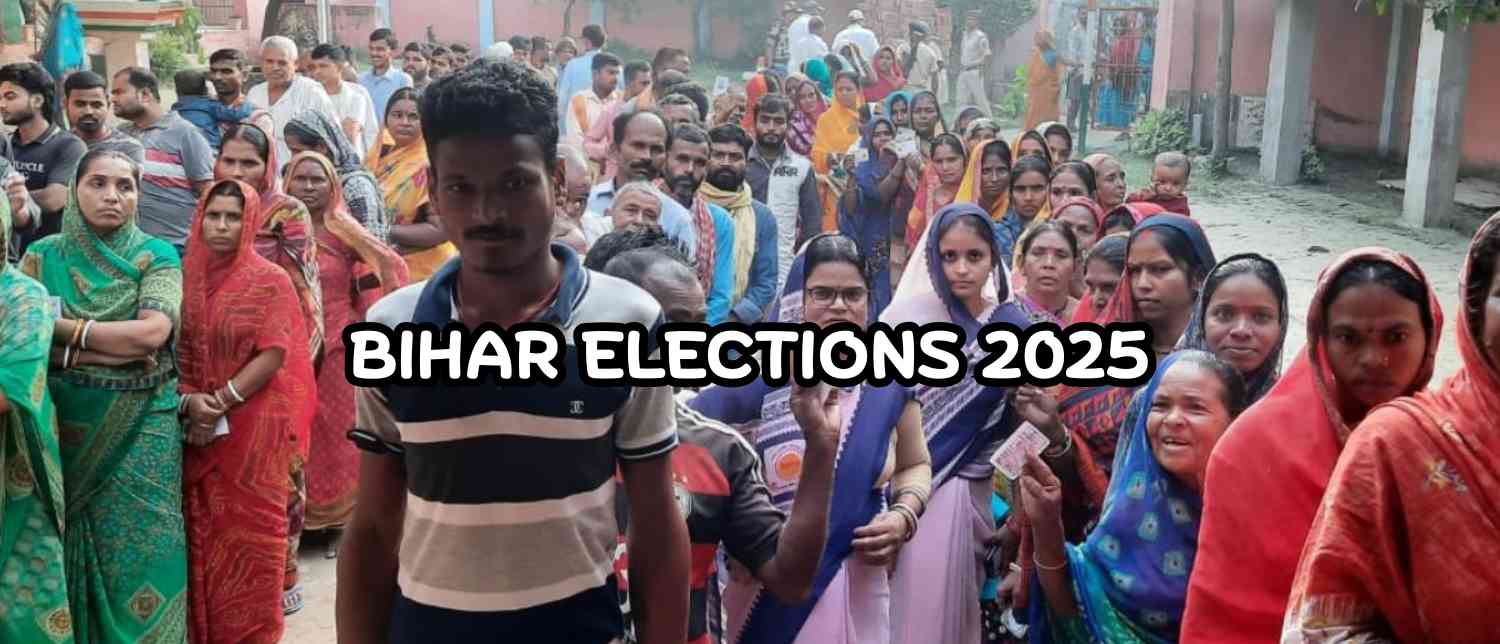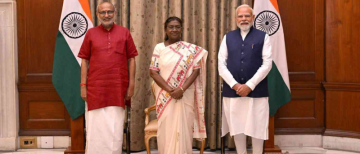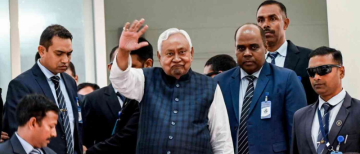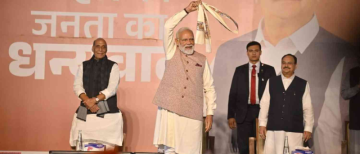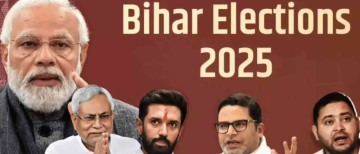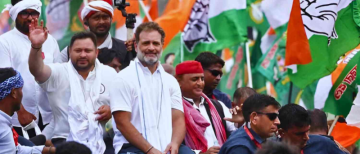As Bihar gears up for one of its most fiercely contested assembly elections in recent memory, all eyes are on the burning question — who will become the next Chief Minister of Bihar? The answer, as always in the state’s complex political theatre, depends on which alliance emerges victorious in the 2025 Bihar elections.
The opposition Mahagathbandhan, part of the larger INDIA bloc, has already made its move, declaring Tejashwi Yadav as its chief ministerial face. On the other hand, the ruling National Democratic Alliance (NDA) — led by the Bharatiya Janata Party (BJP) and Janata Dal (United) — remains tight-lipped about its candidate, leaving room for both speculation and strategy.

Who Will Lead the NDA in Bihar? Nitish or a New BJP Face?
The suspense around the NDA’s leadership is deepening. Will Nitish Kumar, Bihar’s longest-serving Chief Minister and the face of “good governance”, be projected again? Or will the BJP, emboldened by its growing footprint, announce a leader of its own?
An opinion poll released on November 1 offers intriguing insight. According to the State Vibe survey, Tejashwi Yadav currently leads the race as the most preferred CM candidate among voters.
When asked if the BJP should project Nitish Kumar as its CM face, 33% of respondents said the party should declare its own candidate, while only 24% expressed satisfaction with Nitish’s performance. Yet, despite mixed feelings about him, a striking 56% believed Nitish’s tenure as CM was better than that of Lalu Prasad Yadav and Rabri Devi.
This dual perception — a blend of respect for Nitish’s governance and fatigue over his political flip-flops — defines the BJP’s dilemma in Bihar.
Nitish Kumar: From ‘Sushasan Babu’ to ‘Paltu Ram’
If the NDA secures victory, Nitish Kumar still remains among the strongest contenders for the top job. Often hailed as ‘Sushasan Babu’ (Mr. Good Governance) for his developmental initiatives, Kumar is equally criticised as ‘Paltu Ram’, a nickname mocking his frequent alliance switches.
Nitish, born on March 1, 1951, in Bakhtiyarpur near Patna, rose from the grassroots of Bihar’s political landscape. A participant in Jayaprakash Narayan’s JP Movement during the Emergency, he became part of the Janata Party in the 1970s.
He entered the Bihar Legislative Assembly in 1985 and later co-founded the Samata Party with George Fernandes after splitting from the Janata Dal. His career ascended rapidly when he joined the Vajpayee government in 1996 as the Union Railway Minister and subsequently held portfolios like Agriculture and Surface Transport.
Nitish first became Chief Minister in 2000 with BJP’s backing but resigned within a week after failing to secure a majority. His real political dominance began in 2005, when he swept to power promising law and order, infrastructure, and governance reforms. Since then, barring brief interruptions — including Jitan Ram Manjhi’s 278-day tenure — Nitish has held Bihar’s reins for nearly two decades.
His political journey, however, has been marked by dramatic U-turns: breaking from the NDA in 2013, joining hands with RJD and Congress in 2015, returning to the BJP fold in 2017, switching again to Mahagathbandhan in 2022, and finally realigning with the BJP before the 2024 Lok Sabha elections.
For many, Nitish embodies both administrative acumen and political opportunism — a combination that makes him indispensable yet unpredictable in Bihar’s electoral chessboard.
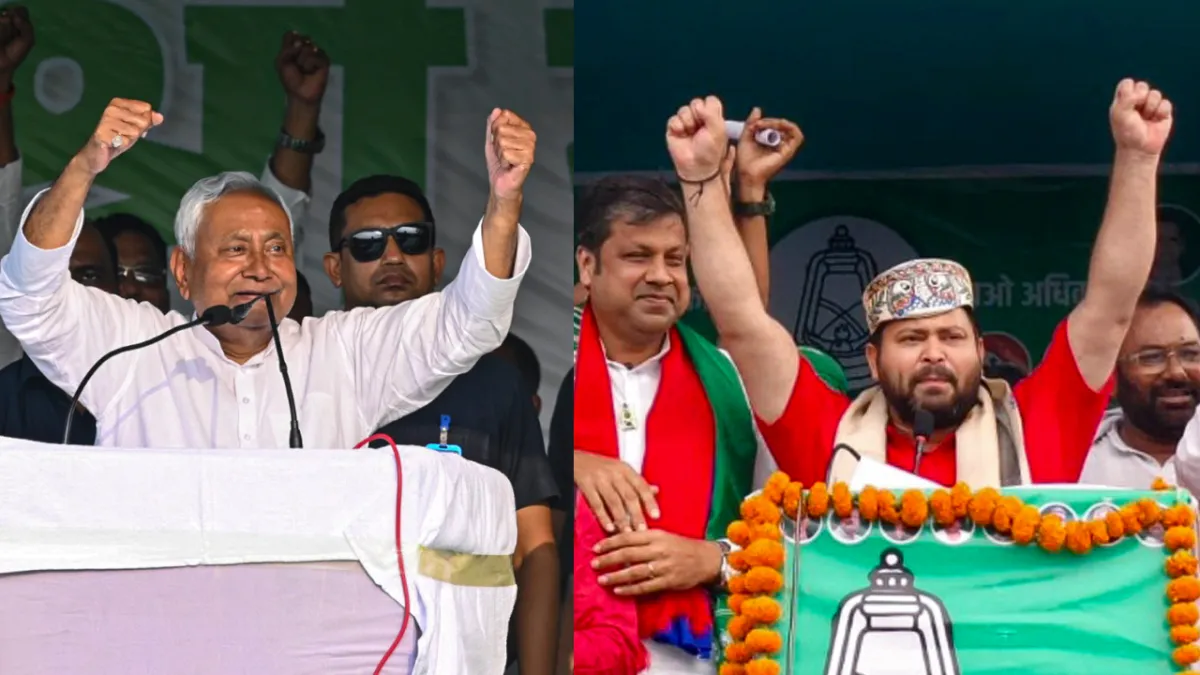
Tejashwi Yadav: Cricketer-Turned-Politician and RJD’s Hope
On the other side of the battlefield stands Tejashwi Yadav, the youthful and ambitious leader of the Rashtriya Janata Dal (RJD) and the declared CM face of the INDIA bloc’s Mahagathbandhan.
Born in Patna to political heavyweights Lalu Prasad Yadav and Rabri Devi, both former Chief Ministers, Tejashwi initially pursued a career in cricket. He played for Delhi’s Ranji Trophy team as a middle-order batsman and was part of the Delhi Daredevils (now Delhi Capitals) squad in the IPL during 2008–2009.
Politics, however, was in his blood. Joining the RJD in 2010, Tejashwi gradually transitioned into a key political figure. He contested the Raghopur seat in Vaishali district in the 2015 Assembly elections, winning the same constituency once represented by both his parents.
At just 26 years old, he became Deputy Chief Minister in Nitish Kumar’s 2015 cabinet, following the Mahagathbandhan’s victory. When Nitish later broke away to reunite with the BJP in 2017, Tejashwi assumed the mantle of Leader of Opposition.
In the 2020 Bihar Assembly elections, the RJD emerged as the single largest party with 75 seats, though the NDA retained power with a slim majority. Nitish’s 2022 return to the Mahagathbandhan restored Tejashwi to the Deputy CM’s chair — until another realignment in 2024 brought Nitish back to the NDA fold.
Now, at 35, Tejashwi Yadav stands as the face of Bihar’s youth-driven, opposition-backed movement — pitching a narrative of employment, healthcare, and social justice against the NDA’s governance record.
Other Potential CM Contenders in the 2025 Bihar Elections
While Nitish and Tejashwi dominate headlines, other leaders are also quietly positioning themselves for prominence.
A C-Voter survey conducted in late September revealed 9.5% of respondents preferred Chirag Paswan, leader of the Lok Janshakti Party (Ram Vilas), as the next CM. 6.8% favoured Samrat Chaudhary, the BJP’s Deputy Chief Minister.
Chirag, son of the late Ram Vilas Paswan, currently serves as the Union Minister for Food Processing Industries, while Samrat Chaudhary — a key Koeri (OBC) leader — is emerging as one of BJP’s strongest organisational faces in Bihar.
The BJP’s indecision on whether to back Nitish or promote a younger leader from its own ranks could redefine Bihar’s political future.

A Tight Contest: NDA vs Mahagathbandhan
Opinion polls so far indicate an intensely close contest.
A survey released on October 25 showed 34.7% of respondents backing the Mahagathbandhan and 34.4% supporting the NDA — a virtual tie, with 8.4% predicting a hung assembly.
An earlier October 8 poll placed the NDA slightly ahead at 41.3%, with 39% leaning toward the Mahagathbandhan.
Meanwhile, voting in Phase 1 of the Bihar elections began on November 6, with high voter turnout reported across constituencies. According to the Election Commission, Bihar now has 10.72 lakh new electors, including 7.78 lakh first-time voters aged 18–19, and a total electorate of 6.6 crore.
In this first phase, 122 women candidates are contesting. The Jan Suraj Party has fielded 119 candidates, while within the NDA, JD(U) is contesting 57 seats, BJP 48, and LJP (Ram Vilas) 14.
For the Mahagathbandhan, RJD is contesting 73 seats, Congress 24, and CPI(ML) 14, with some friendly contests expected within the alliance.
In 2020, the NDA won 125 seats and the Mahagathbandhan 110, marking one of the closest verdicts in Bihar’s recent electoral history.
Why Bihar’s Results Matter Beyond Bihar: The UP Connection
Interestingly, the Bihar Assembly Election 2025 isn’t just about Patna — it’s being closely monitored in Lucknow and Delhi. For the BJP, Bihar serves as a testing ground for strategies that could shape its 2027 Uttar Pradesh campaign.
According to party insiders, the BJP’s ticket distribution and community representation in Bihar are deliberate experiments aimed at fine-tuning its caste arithmetic. The NDA has increased representation for backward and Dalit communities, echoing the social engineering model it hopes to replicate in UP.
Within the NDA, JD(U) has nominated 37 backward-class candidates and 22 extremely backward-class (EBC) candidates, including eight Yadavs. The BJP has fielded 24 candidates from backward classes, 16 from EBCs, and 49 from upper castes like Rajputs, Bhumihars, and Kayasthas.
This caste-balancing exercise, insiders say, directly counters the Opposition’s PDA (Pichhda, Dalit, Alpsankhyak) coalition being crafted by Samajwadi Party chief Akhilesh Yadav in Uttar Pradesh.
The BJP has also introduced a “Lok Sabha cluster model” in Bihar — a micro-level organisational framework that coordinates local teams, monitors MLA performance, and provides real-time ground feedback. If successful, this will be rolled out in UP’s 2027 elections to combat anti-incumbency and strengthen rural outreach.
Political observers view Bihar as a “laboratory of electoral strategy”, where social inclusion, micro-management, and grassroots mobilisation are replacing large, personality-driven campaigns.
As one analyst summed up, “Bihar and Uttar Pradesh share similar social fabrics — caste equations define both. If the BJP’s social engineering succeeds in Bihar, it will likely script the first draft of its 2027 Uttar Pradesh strategy.”
The Verdict Awaits
As Bihar votes in phases through November, the political narrative is clear: Nitish Kumar seeks to preserve his legacy, Tejashwi Yadav hopes to reclaim his family’s political stronghold, and the BJP eyes a deeper, more independent footing in Bihar’s politics.
Whichever way the verdict swings, the Bihar Elections 2025 will not only decide the state’s next Chief Minister but also shape the political strategies for the Hindi heartland — from Patna to Lucknow and beyond.
With inputs from agencies
Image Source: Multiple agencies
© Copyright 2025. All Rights Reserved. Powered by Vygr Media.

